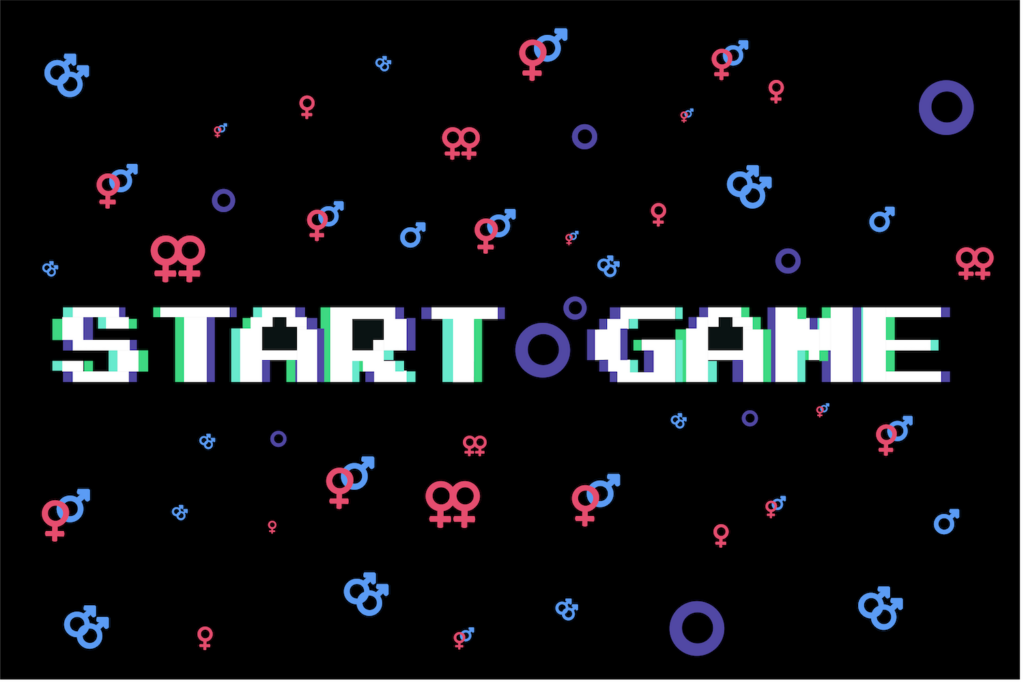Words and illustration by Clarice
 Heterosexuality is often assumed to be the default, ingrained into society so deeply that many grow up believing it is the inevitable path to love and fulfilment. Before individuals even understand their attraction, they are placed into a world that leads them toward boy-meets-girl love stories and the promise of happily ever after. This expectation is not just suggested; it is shouted from every screen, woven into advertisements, and embedded in the bedtime stories that end with a princess finding her prince. It becomes a performance many do not even realise they are participating in until they begin to question it.
Heterosexuality is often assumed to be the default, ingrained into society so deeply that many grow up believing it is the inevitable path to love and fulfilment. Before individuals even understand their attraction, they are placed into a world that leads them toward boy-meets-girl love stories and the promise of happily ever after. This expectation is not just suggested; it is shouted from every screen, woven into advertisements, and embedded in the bedtime stories that end with a princess finding her prince. It becomes a performance many do not even realise they are participating in until they begin to question it.
A growing number of voices, particularly on social media platforms like TikTok, have begun dissecting this phenomenon. Many young women, especially queer women, reflect on what they once considered “boy crazy” phases, recalling exaggerated crushes and desperate attempts to fit into societal norms. In hindsight, they recognise these experiences as a conditioned response rather than genuine attraction. Like a script handed to them at birth, they had been following a narrative that made love and desire seem predestined rather than self-discovered.
This phenomenon is best understood through the lens of compulsory heterosexuality, a concept popularised by feminist essayist Adrienne Rich. It describes the societal expectation that women will be attracted to men, shaping their understanding of relationships before they even have the chance to form independent desires. More than just an expectation, compulsory heterosexuality is packaged and sold as the ultimate life goal. Romantic comedies, pop songs, and storybook endings promote the idea that heterosexual love is not merely an option, but the golden ticket to happiness, stability, and a meaningful life.
From an early age, girls are conditioned to see heterosexual love as the natural order. They are asked about their “boyfriends” in kindergarten, teased for interactions with boys, and encouraged to envision a future built around romantic partnership with men. Rom-coms paint love as the defining moment of a person’s life, while advertisements sell perfume and clothing with the promise of being desired by men. Romance, according to these narratives, is a prize waiting at the finish line, one that must be earned by playing the right role. Any deviation from this path is met with confusion, resistance, or outright rejection.
For many, this creates an internal struggle between expectation and reality. Some force themselves to develop crushes on boys, convinced that attraction will eventually materialise. Others experience feelings of detachment when romantic or sexual interest does not align with what they have been led to expect. Conversations about low libido, disinterest in dating, or a lack of enthusiasm for relationships are often dismissed. Society assumes that attraction to men will emerge—eventually. To stray from this norm is not just to defy an expectation but to reject the deeply ingrained belief that love, in its truest form, must be heterosexual.
This pressure to conform can be suffocating. When heterosexuality is framed as the only viable option, anything outside of it feels like an anomaly, something to be explained or justified rather than simply accepted. As a result, individuals may stay in relationships that do not fulfill them, search for a connection that never materialises, or convince themselves that their lack of interest is just a phase. They chase a dream they have been promised, only to realise it was never meant for them.
Unlearning compulsory heterosexuality requires a deliberate effort to question ingrained narratives. It means recognising that attraction is not an obligation and that desire does not have to follow a predetermined script. It also means creating space for uncertainty, because not knowing is just as valid as knowing with certainty. More importantly, it involves challenging the idea that romance, particularly heterosexual romance, is the definitive measure of a successful life.
Despite increasing conversations about sexuality and identity, ambiguity is still met with resistance. Society favors clear-cut labels and definitive answers. Those who exist in the in-between, who are questioning, exploring, or simply unsure, often face skepticism. But many individuals do not have an immediate answer for their identity, and that should be acknowledged as valid.
The growing visibility of these discussions marks a shift toward a world where there is no presumed default. Where sexuality is not something assigned at birth but something discovered on an individual’s own terms. Where young people grow up knowing they do not have to force themselves into predefined roles. Most importantly, where happiness is not tied to fitting into a romantic mould but to living authentically.
To get there, it is necessary to challenge the structures that uphold heteronormativity. That means rethinking the stories told to children, the expectations placed on young people, and the assumptions made about others. It requires normalising exploration, embracing fluidity, and rejecting the notion that anyone must “prove otherwise” to be accepted.
For now, compulsory heterosexuality continues to shape lives in ways many do not even recognise. But as these conversations become more common, the script becomes easier to see for what it is: a suggestion, not a rule. And for those who have spent years playing a role they did not choose, there is a growing sense of liberation in knowing they are not alone. Questioning the default is not just possible—it is liberating.






